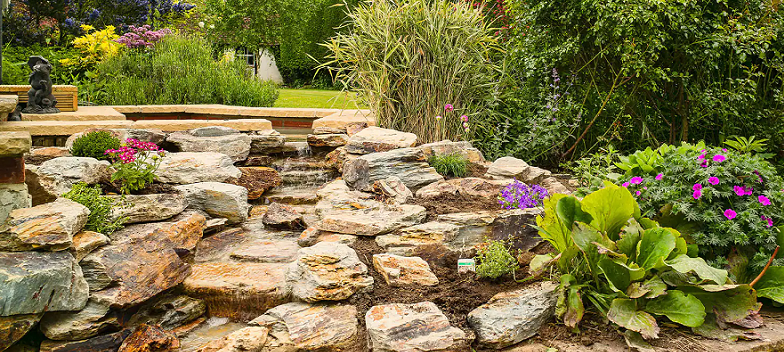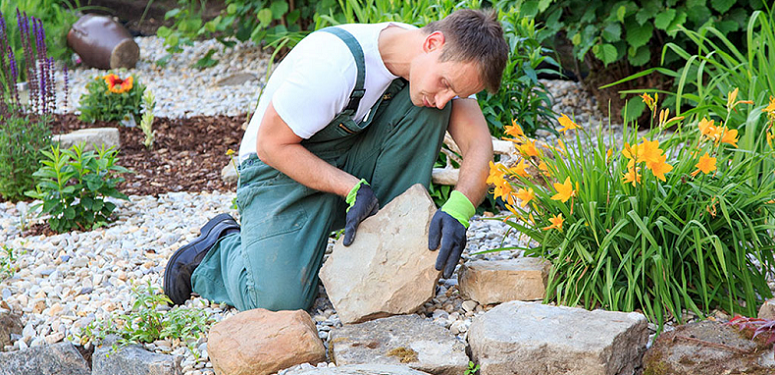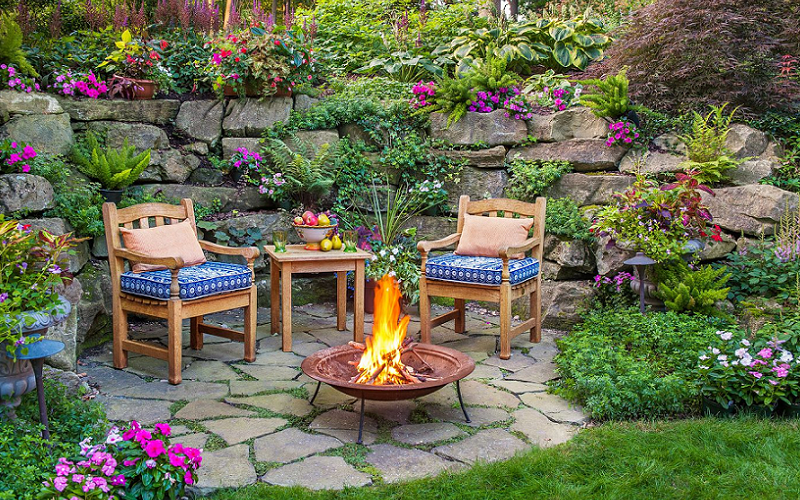Rock gardens are unique and beautiful additions to any outdoor space, offering a low-maintenance and drought-resistant alternative to traditional gardens. However, creating and maintaining a rock garden can be a complex process that requires careful planning and attention to detail. Here we explore the intricacies of creating and maintaining rock gardens, covering everything from site selection to ongoing maintenance.
What Is a Rock Garden?
A rock garden is a type of garden that features rocks, stones, and other types of rock formations as its main elements, often accompanied by small plants that are well-suited to the conditions found in rock gardens. Rock gardens can range from simple arrangements of rocks and stones to complex and intricate designs that incorporate a variety of different types of rocks and plants.
They can be designed to mimic natural rock formations or to create a more structured and formal garden setting. The primary purpose of a rock garden is to create a visually appealing outdoor space that requires minimal maintenance and is well-suited to regions with limited rainfall or water resources.
Preparation of a Rock Garden
Preparation is a crucial step in creating a rock garden. It involves several important considerations, including site selection, design, and planning.
Site selection is the first step in preparing a rock garden. A suitable location should have adequate sunlight and well-draining soil. The soil type is important because it can affect the types of plants that can be grown in the garden and the amount of water that the soil can retain.

Design is the next step in preparing a rock garden. A rock garden can be designed in many different ways, from simple arrangements of rocks and stones to complex designs that incorporate different types of rocks, plants, and other elements. It’s important to choose the right types of rocks and plants to create the desired look and feel of the garden.
Planning and preparation is the final step in preparing a rock garden. This involves clearing the site, amending the soil, and installing irrigation. Clearing the site is necessary to remove any existing vegetation and create a blank canvas for the rock garden. Amending the soil is necessary to ensure that the soil is well-drained and has the right pH for the plants that will be grown in the garden. Installing irrigation is important to ensure that the plants receive adequate water and nutrients to grow and thrive.
Planting and Arranging a Rock Garden
Planting and arranging a rock garden is an important step in creating a visually appealing and functional outdoor space. There are several key considerations to keep in mind when planting and arranging a rock garden, including rock placement, plant selection, and ongoing maintenance.
Rock placement is an important consideration when planting and arranging a rock garden. Rocks can be used to create terraces, paths, and focal points in the garden, and they should be arranged in a way that is aesthetically pleasing and functional. For example, large rocks can be placed at the back of the garden to create a backdrop, while smaller rocks can be used to create paths and borders.

Plant selection is another key consideration when planting and arranging a rock garden. It’s important to choose plants that are well-suited to the growing conditions in the garden, such as soil type, sun exposure, and drainage. Some plants that are commonly used in rock gardens include succulents, alpine plants, and small shrubs.
Ongoing maintenance is also an important consideration when planting and arranging a rock garden. Plants need to be watered, fertilized, and pruned regularly to ensure that they grow and thrive. Drainage should be monitored to ensure that water does not accumulate in the garden and cause damage to the plants. The garden may need to be re-arranged from time to time to revitalize it or add new plants.
Ongoing Maintenance of a Rock Garden
Ongoing maintenance is a crucial aspect of keeping a rock garden looking its best and functioning properly. There are several key tasks that should be performed regularly to ensure that the garden stays healthy and attractive.
Watering is an important aspect of ongoing maintenance for rock gardens. The frequency and amount of water required will depend on the type of plants in the garden, the climate, and the soil conditions. Overwatering can lead to root rot and other plant problems, while under watering can cause the plants to wilt and become stressed.

Weeding is another important aspect of ongoing maintenance for rock gardens. Weeds can compete with the plants in the garden for water, nutrients, and sunlight, leading to a decline in plant health. Regular weeding will help to keep the garden looking its best and maintain the health of the plants.
Pruning is another task that should be performed regularly to maintain the health and appearance of a rock garden. Pruning helps to keep the plants compact and promotes new growth, which can help to revitalize the garden and keep it looking its best.
Fertilization is an important aspect of ongoing maintenance for rock gardens. Plants in rock gardens may require additional fertilizer to compensate for the lack of soil depth and nutrients. Regular fertilization will help to keep the plants healthy and vibrant.

